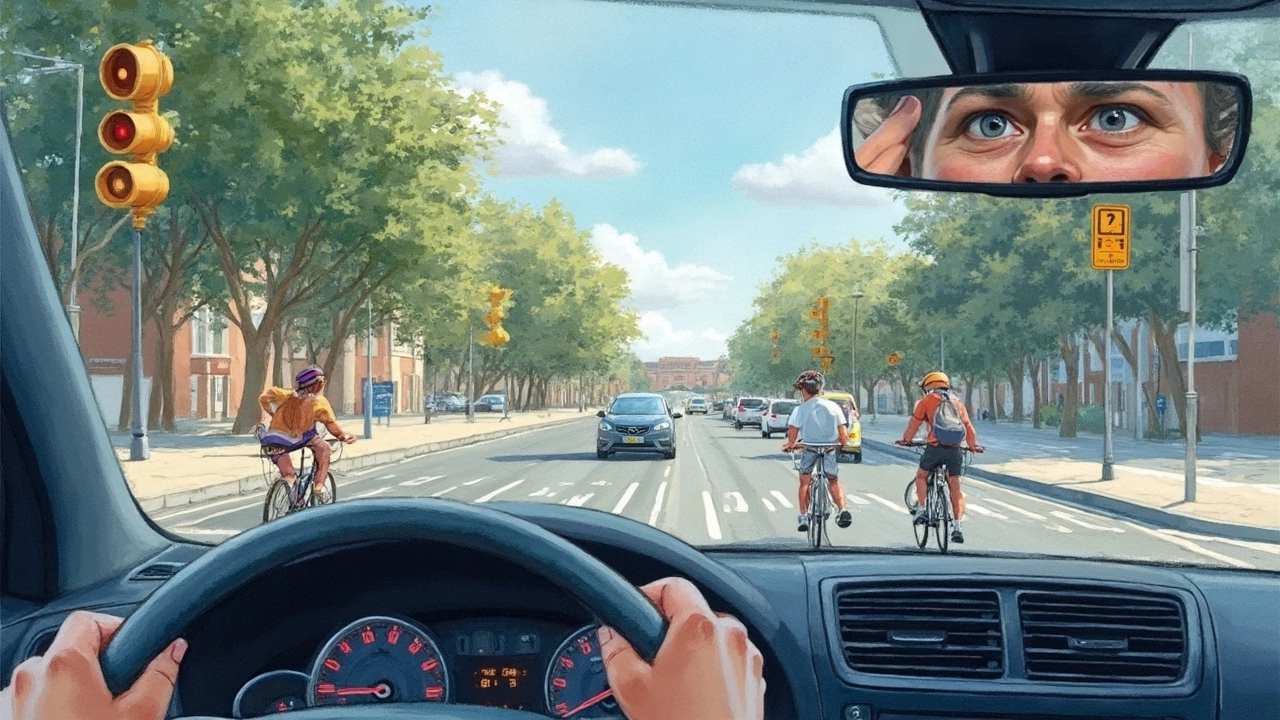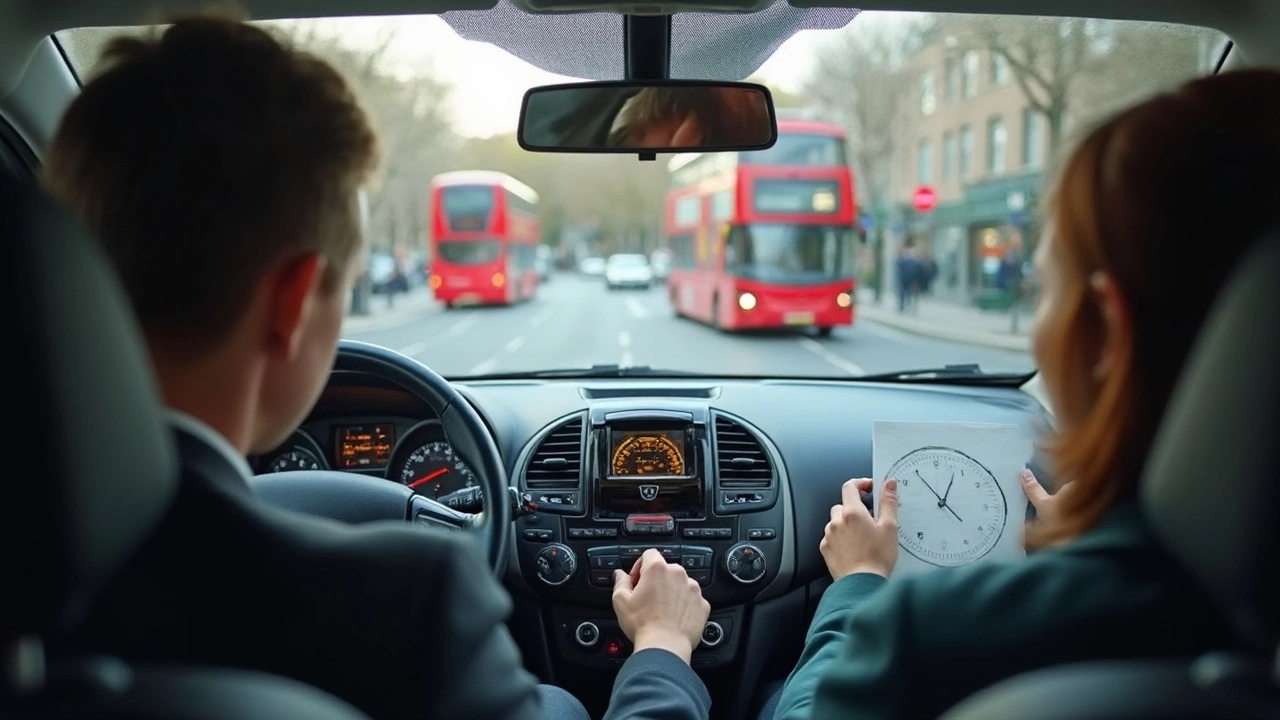Some people freeze up at a roundabout, others hang back at a green light and everyone behind honks. Yep, hesitation trips up loads of learners. But how serious is it? Does a bit of extra caution send you home with a fail sheet?
Hesitation means sitting too long when it’s safe to go. You’re not being careful anymore—you’re holding up the flow. Examiners spot this right away because confident driving isn’t about racing, but it is about moving when it’s clearly safe. Too much pausing and you mess up the traffic or annoy other drivers. That can cost you on the test.
Still, what’s the line between being overly cautious and just making sure you’re safe? This isn’t always clear, especially if your nerves kick in. Good news: you can spot the warning signs if you know what to look for. Mastering this means you won’t just pass the test—you’ll be less stressed every time you drive.
- What Does Hesitation Mean in a Driving Test?
- When Is Hesitation Marked as a Fault?
- Real Reasons People Hesitate (and How to Fix Them)
- Tips to Avoid Hesitation and Impress the Examiner
What Does Hesitation Mean in a Driving Test?
On a driving test, hesitation means waiting too long to make a move when it’s obvious you could go safely. Think about sitting at a junction with a clear gap but just not going, or taking forever to pull out of a roundabout when other drivers expect you to get moving. It’s not the same as pausing briefly to double check—it’s when that pause becomes awkward and holds up other cars. The hesitation fault is pretty common because nerves mess with your timing, especially if you don’t drive in busy traffic often.
Examiners use hesitation as a real measure of your confidence on the road. They want to see that you can make decisions quickly and safely, keeping the flow going. If you choke at a busy intersection and back up traffic, it's a problem. If you wait too long at a green light or slow everyone down at a roundabout, you’ll likely rack up a fault—sometimes even a serious one.
Here are some classic hesitation moments that get marked on driving tests:
- Stopping for no reason at a clear junction or roundabout
- Taking ages to turn when it’s obviously safe
- Failing to move off when there’s a safe gap
- Letting uncertainty cause you to block traffic behind you
Want some numbers? Check this out:
| Year | Percentage of Learners Failing Due to Hesitation |
|---|---|
| 2022 | 6% |
| 2023 | 8% |
| 2024 | 7.5% |
Hesitation isn’t about acting like a racecar driver, but it does mean showing you can keep up with traffic when it’s your turn. Examiners care most about whether your actions make things awkward or risky for others. If you’re holding up the show, that’s when you get marked down.
When Is Hesitation Marked as a Fault?
Examiners don’t fail you for being careful, but there’s a line. On a driving test, hesitation is marked as a fault when you cause a delay for yourself or someone else without a good reason. If you pass up clear chances to move off, pull out, or turn when it’s definitely safe, that’s when the mark goes on your test sheet.
The rules are pretty consistent across most test centers. Here are the moments where hesitation commonly gets noted:
- Emerging at junctions: You wait even though the road is clear and you’d have had time to go.
- Roundabouts: There’s a gap but you sit there, holding up cars behind.
- Traffic lights: The light turns green but you stay put for more than a couple of seconds, causing cars to pile up behind you.
- Moving off from the side of the road: You have a clear view but still don’t move off, making traffic or the examiner wonder what’s happening.
One hesitation on its own, where there’s no disruption to traffic, usually gets marked as a minor fault. But repeat it a few times, or cause a real hold-up, and it can easily turn into a serious fault—sometimes leading to an instant fail.
Check out some numbers recorded in recent years:
| Scenario | Type of Fault | Percentage of Fails (UK 2023) |
|---|---|---|
| Hesitation at junctions | Serious | 18% |
| Waiting at green lights | Minor to Serious | 7% |
| Roundabout over-caution | Minor | 5% |
Examiners look for a smooth, consistent flow. They log hesitation only when it breaks the pace of traffic or looks like you’re nervous and not judging the road well. If nobody’s affected and you’re clearly checking for safety, it might just be a minor, but repeated hesitation is a fast-track to a serious mark.

Real Reasons People Hesitate (and How to Fix Them)
If you’ve ever found yourself stuck at a junction, frozen on the clutch, you’re not alone. Every year, thousands of learner drivers lose points—or even fail—because of hesitation. According to data from the UK’s DVSA, nearly 11% of practical test failures in 2024 were down to this single issue. So, why do people hesitate, and more importantly, how do you get past it?
Hesitation isn’t just about being uncertain; it comes from a bunch of places, and here’s what usually trips learners up:
- Nerves and Overthinking: On test day, nerves spike and simple decisions suddenly feel huge. You might check that roundabout three extra times just in case, and by then—your chance is gone.
- Trouble Judging Gaps: New drivers often can’t tell if there’s enough space between cars to pull out safely. This is super common at busy junctions, where cars seem endless.
- Second-Guessing Yourself: You know you can go, but then the "what ifs" jump in your mind—what if you misjudge speed, or what if you stall?
- Previous Mistakes: Messed up once? You remember it at every similar situation, and that memory slows you down next time.
Here’s what examiners and studies say works if hesitation gets you stuck:
- Practice with Purpose: Don’t just drive—practice judging gaps and making decisions at junctions. Try with a calm instructor or even a patient friend. The more real practice, the easier it gets.
- Breathe and Pause—But Not Forever: If you need to, take a second to look, but make your move when it’s safe instead of waiting for a gap big enough for a bus. Traffic in cities just won’t give you perfect conditions.
- Small Wins Build Confidence: Pick simple situations at first—like quieter intersections. Each smooth move boosts your confidence. Over time, tougher spots get easier.
- Visualize Success: Mentally picture yourself handling tricky spots before the test. It sounds minor, but a recent study showed mental practice can help reaction and decision times drop by 15% for new drivers.
Want a quick look at how hesitation stacks up among common serious faults? Check this out:
| Serious Fault | % of Test Failures (2024) |
|---|---|
| Junctions - Hesitation | 11% |
| Mirrors - Not Checking | 14% |
| Turning Right | 9% |
| Move Off - Safety | 7% |
Done right, it’s all about trusting your gut, keeping your eyes moving, and backing yourself. You know the rules, now it’s about stepping up and showing the examiner you trust them, too.
Tips to Avoid Hesitation and Impress the Examiner
If you really want to make the examiner happy, show them you’re confident and smooth behind the wheel. That doesn’t mean speeding off at every green light—it’s about making good calls and moving when you should. Here are actionable ways to keep hesitation from tanking your driving test:
- Know the difference between caution and hesitation. Caution means checking it’s clear and safe; hesitation means you’re just sitting there even though you can go. Practicing with a driving instructor helps you see that line.
- Keep your eyes moving. Scan the whole junction, roundabout, or crossing well before you reach it. If you wait until the last moment to look, you’re bound to freeze and that’s when hesitation creeps in.
- Judge gaps early. If you’re taught the "if you could walk across, you can drive across" rule for smaller roads, it’s handy. For bigger junctions, trust your instructor’s gap tips and practice loads.
- Watch the car in front, but don’t copy blindly. Some folks are overly cautious or slow—don’t let them fool you into hesitating when you wouldn’t need to.
- Keep practice going. Stats from the UK’s DVSA say learners who have 20 or more hours of professional lessons combined with lots of private practice have far higher pass rates. Experience builds that quick decision-making.
- Self-talk helps your nerves. Say what you’re doing out loud in your head—"Clear left, clear right, I can go"—and it keeps your brain focused on actions instead of anxiety.
Here’s an at-a-glance look at what really helps knock out that hesitation fault on the big day:
| Tip | Benefit |
|---|---|
| Scanning early | Reduces panic stops and gives you more time to act |
| Mock tests | Makes you react in real-life test situations, lowering nerves |
| Driving on different days/times | You face new junctions and traffic flow, building real confidence |
| Feedback after each session | Pinpoints exactly where you need faster decision-making |
| Self-reflection after lessons | Helps spot patterns (like nerves at busy roundabouts) to work on at home |
The bottom line? Be ready to go, trust your own practice, and treat hesitation as something you can totally control. That’s how you not only pass, but stand out in your test.

